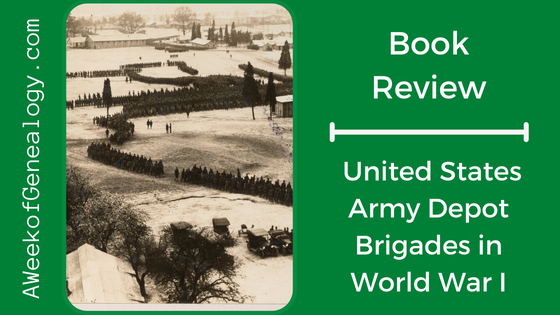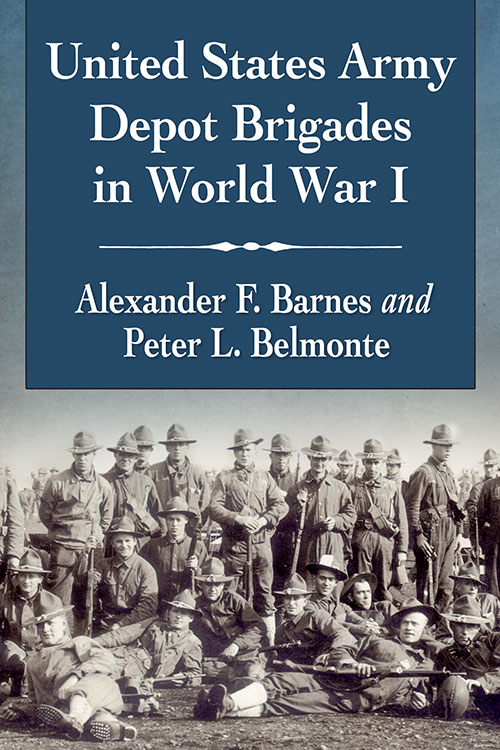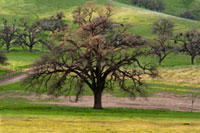Book Review: “United States Army Depot Brigades in World War I”

There are two groups of readers who should investigate this book: those with an interest in soldiers who stayed stateside during the Great War and those interested in soldiers who served overseas. All Army soldiers had been part of the system of Depot Brigades in the United States at some time in their military careers. Some soldiers might also have gained experience in the other stateside military organizations discussed in this book.
The authors begin with a discussion about the National Army and the National Guard training sites, and specifics of the roles that Depot Brigades would perform. There were immense challenges for the United States Army to reach a strength of 4 million soldiers. The authors share these challenges at each step, from changes to the conscription process, to the issues with how local draft boards supplied men, to how the soldiers were and were not equipped and trained. Forming military organizations and replacement strategies are also discussed. The stories of individuals, sometimes told in their own words, highlight how chaotic the system could appear. In some cases, a Camp might grow to be as large as one of the largest cities in a state. The Depot Brigades grew from preparing draftees for war, to managing replacement centers, war prisoners, conscientious objectors and the education of illiterate soldiers. After the Armistice, their role switched into demobilizing millions, while the Army kept some military organizations active in case the Germans violated the Armistice. There is information about each Depot Brigade, including its history as well as details about its purposes and challenges.
The book is about much more than the Army Depot Brigades. It covers all of the activities that occurred in the United States, including the Development Battalions, the Stateside Divisions and other stateside organizations. There is a chapter included about those who served but are usually in the shadows of history. Understanding their roles provides readers with a more full and inclusive narrative. It was good to see that my area of research, the Pioneer Infantry Regiments, were among organizations included in the narrative.
There is also a chapter containing brief biographies of those whose service was primarily done in the United States. The subjects were chosen from a variety of backgrounds and fields, and are interesting to read.
I found this book very helpful to support my own research about my Grandfather’s brother, Patrick. Patrick had served in the 154th Depot Brigade in Camp Meade, MD. By combining the information and insights presented in this book with records of his individual service, I gained more understanding about his experiences while stationed at Camp Meade. From his service abstract, I knew the dates of his service with the 154th Depot Brigade, but I learned that at the time he arrived the Camp was the second largest city in Maryland, second only to Baltimore. I knew that he had been transferred from the 154th Depot Brigade in August 1918 to the 33rd Field Artillery (FA) Regiment. The 33rd FA was planned to be part of the 11th Division. His transfer to the 33rd FA occurred just before Camp Meade became one of the camps that suffered the most from the Spanish flu during September and October. His training would have been impacted while the flu raged through the Camp. Patrick’s service summary included information that he had never served overseas, so when I learned about the advance detachment that arrived in England just prior to the Armistice, I knew he had not been part of it. He was discharged in December 1918 and that it was prior to the demobilization of the 11th Division, which occurred in February 1919. In contrast, Patrick’s brother (my Grandfather) had served overseas and seen combat in the Pioneer Infantry. After Patrick’s discharge, my Grandfather would serve several more months in the post-war Army of Occupation, returning in July of 1919.
Some of the underlying themes that emerged were the challenges that the United States faced to create and outfit an Army, the constant movement of personnel within the borders of the United States, and above all, the difficult work of the Depot Battalions to respond. Anyone who wants to learn more about the life of soldiers and the Army in World War I would benefit from reading this book.
The authors have illustrated the book with photos, cartoons and official forms throughout. They present personal stories, drawn from numerous sources. These stories combined with the visual elements bring the people to life in the way a textbook cannot. The numerous photos are great, but the extra dimension that comes with excerpts from diaries and letters make the stories very accessible and relatable. The variety of materials used in the book could inspire your own future research.
Both Mr. Barnes and Mr. Belmonte are known for their research skills and their attention to detail. As veterans, both have inherited the legacy of service in United States military, directly linking them to those who served in WWI. Their insights provide depth as they share the stories of stateside Army activities during the Great War.
The book is published by McFarland Books and more information about it can be found at: https://mcfarlandbooks.com/product/united-states-army-depot-brigades-in-world-war-i




